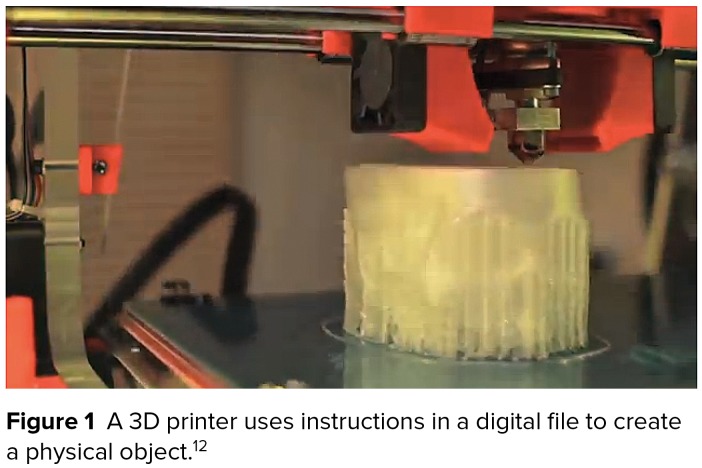Medical Applications for 3D Printing: Current and Projected Uses
Medical applications for 3D printing are expanding rapidly and are expected to revolutionize health care.1 Medical uses for 3D printing, both actual and potential, can be organized into several broad categories, including: tissue and organ fabrication; creation of customized prosthetics, implants, and anatomical models; and pharmaceutical research regarding drug dosage forms, delivery, and discovery.2 The application of 3D printing in medicine can provide many benefits, including: the customization and personalization of medical products, drugs, and equipment; cost-effectiveness; increased productivity; the democratization of design and manufacturing; and enhanced collaboration. However, it should be cautioned that despite recent significant and exciting medical advances involving 3D printing, notable scientific and regulatory challenges remain and the most transformative applications for this technology will need time to evolve.

WHAT IS 3D PRINTING?
Three-dimensional (3D) printing is a manufacturing method in which objects are made by fusing or depositing materials-such as plastic, metal, ceramics, powders, liquids, or even living cells-in layers to produce a 3D object.1,8,9 This process is also referred to as additive manufacturing (AM), rapid prototyping (RP), or solid free-form technology (SFF).6 Some 3D printers are similar to traditional inkjet printers; however, the end product differs in that a 3D object is produced.1 3D printing is expected to revolutionize medicine and other fields, not unlike the way the printing press transformed publishing.
There are about two dozen 3D printing processes, which use varying printer technologies, speeds, and resolutions, and hundreds of materials.9 These technologies can build a 3D object in almost any shape imaginable as defined in a computer-aided design (CAD) file (Figure 1).9 In a basic setup, the 3D printer first follows the instructions in the CAD file to build the foundation for the object, moving the printhead along the x–y plane.5 The printer then continues to follow the instructions, moving the printhead along the z-axis to build the object vertically layer by layer.5 It is important to note that two-dimensional (2D) radiographic images, such as x-rays, magnetic resonance imaging (MRI), or computerized tomography (CT) scans, can be converted to digital 3D print files, allowing the creation of complex, customized anatomical and medical structures (Figure 2).